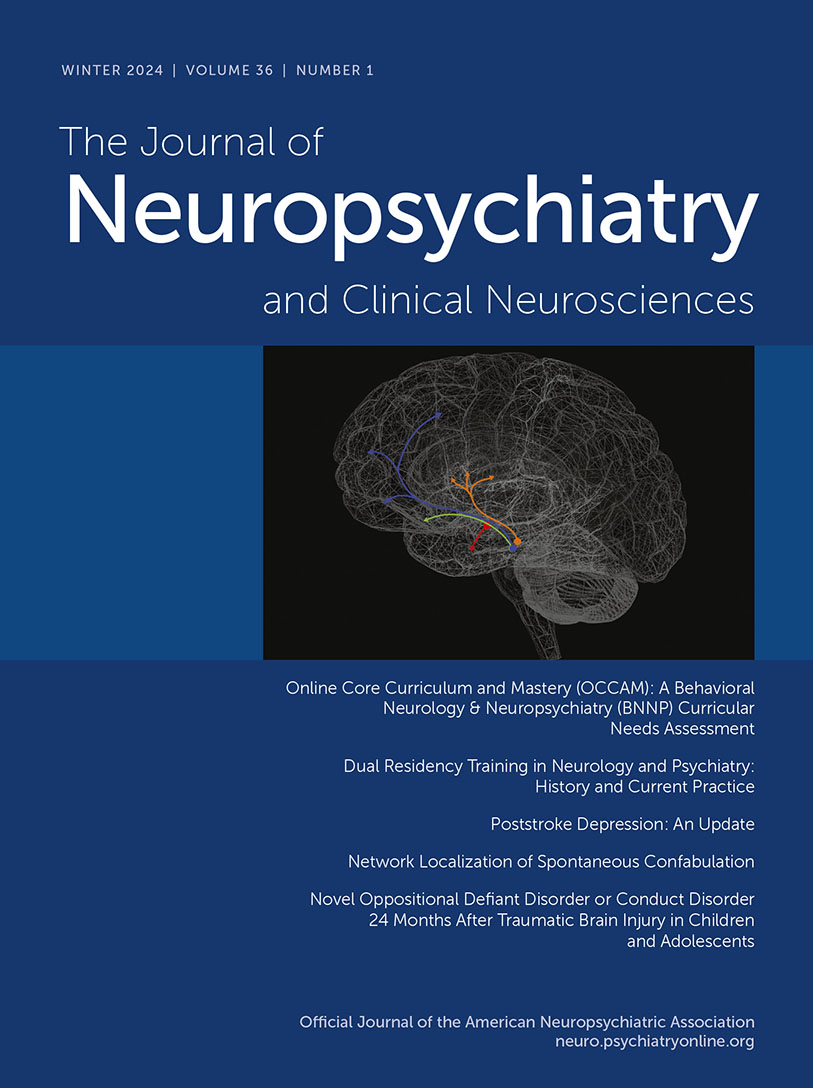Network Localization of Spontaneous Confabulation
Abstract
Objective:
Spontaneous confabulation is a symptom in which false memories are conveyed by the patient as true. The purpose of the study was to identify the neuroanatomical substrate of this complex symptom and evaluate the relationship to related symptoms, such as delusions and amnesia.
Methods:
Twenty-five lesion locations associated with spontaneous confabulation were identified in a systematic literature search. The network of brain regions functionally connected to each lesion location was identified with a large connectome database (N=1,000) and compared with networks derived from lesions associated with nonspecific (i.e., variable) symptoms (N=135), delusions (N=32), or amnesia (N=53).
Results:
Lesions associated with spontaneous confabulation occurred in multiple brain locations, but they were all part of a single functionally connected brain network. Specifically, 100% of lesions were connected to the mammillary bodies (familywise error rate [FWE]–corrected p<0.05). This connectivity was specific for lesions associated with confabulation compared with lesions associated with nonspecific symptoms or delusions (FWE-corrected p<0.05). Lesions associated with confabulation were more connected to the orbitofrontal cortex than those associated with amnesia (FWE-corrected p<0.05).
Conclusions:
Spontaneous confabulation maps to a common functionally connected brain network that partially overlaps, but is distinct from, networks associated with delusions or amnesia. These findings lend new insight into the neuroanatomical bases of spontaneous confabulation.
Access content
To read the fulltext, please use one of the options below to sign in or purchase access.- Personal login
- Institutional Login
- Sign in via OpenAthens
- Register for access
-
Please login/register if you wish to pair your device and check access availability.
Not a subscriber?
PsychiatryOnline subscription options offer access to the DSM-5 library, books, journals, CME, and patient resources. This all-in-one virtual library provides psychiatrists and mental health professionals with key resources for diagnosis, treatment, research, and professional development.
Need more help? PsychiatryOnline Customer Service may be reached by emailing [email protected] or by calling 800-368-5777 (in the U.S.) or 703-907-7322 (outside the U.S.).



